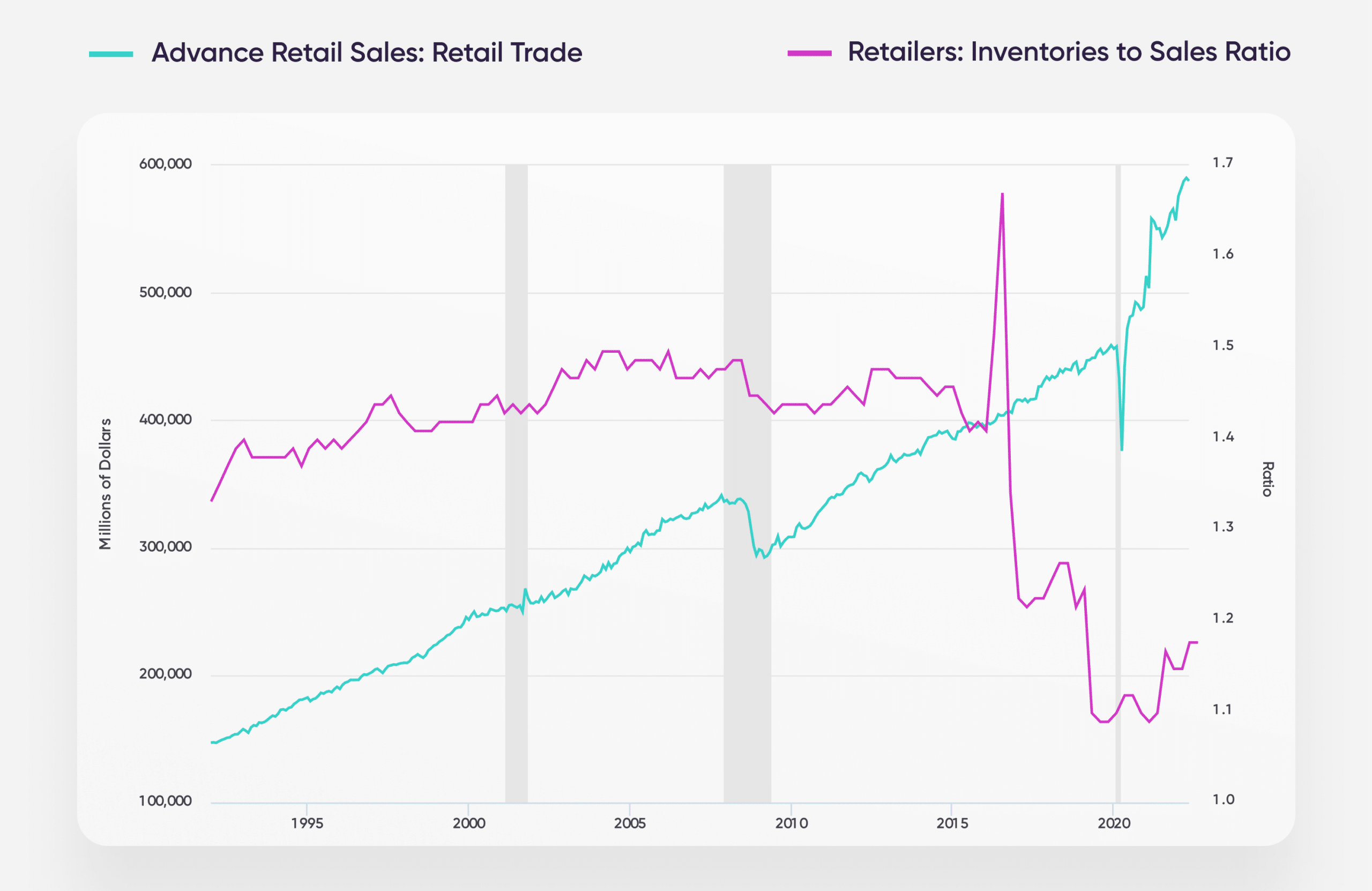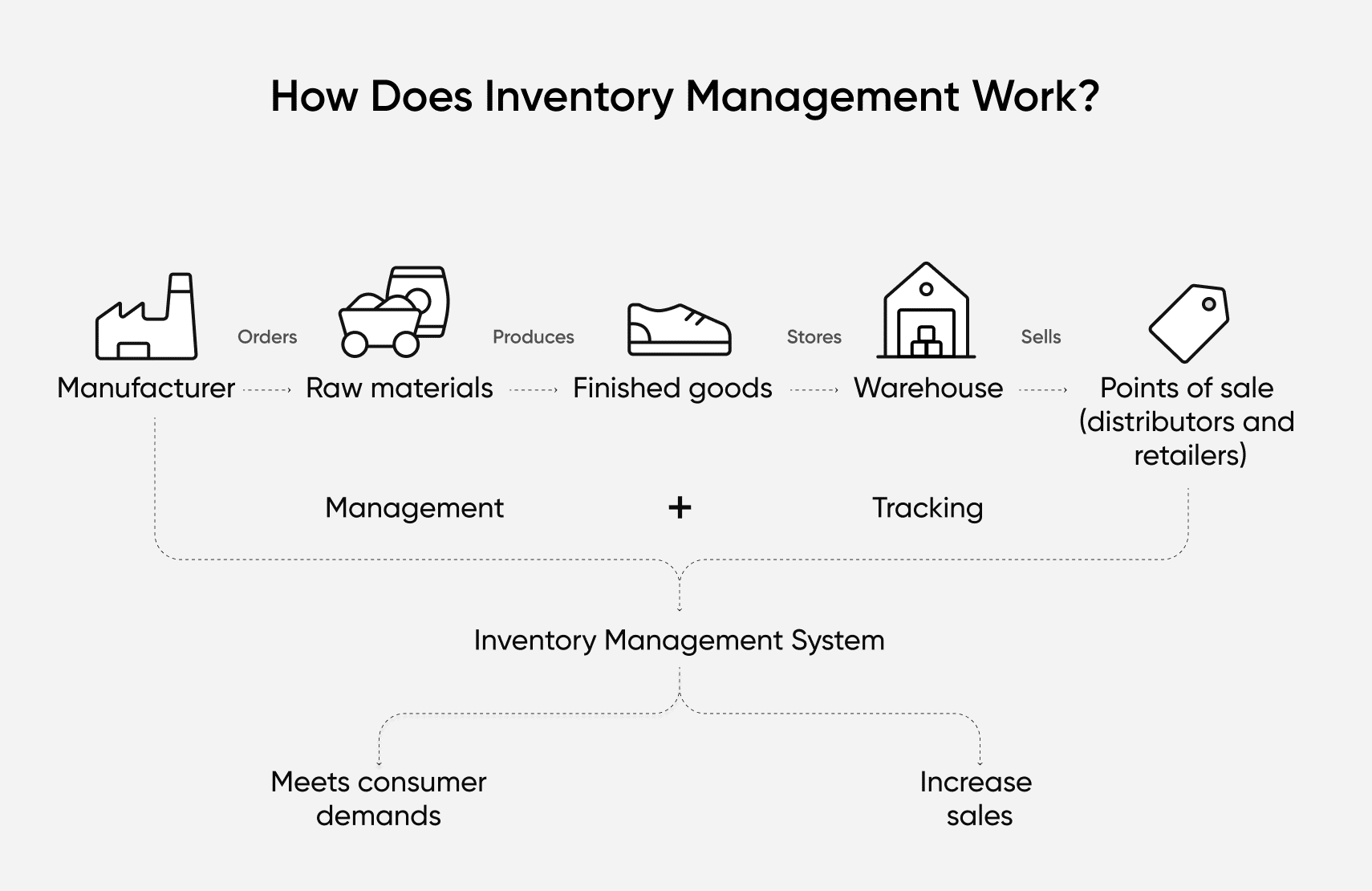Inventory Management in 2023: Tackling Supply Chain Issues
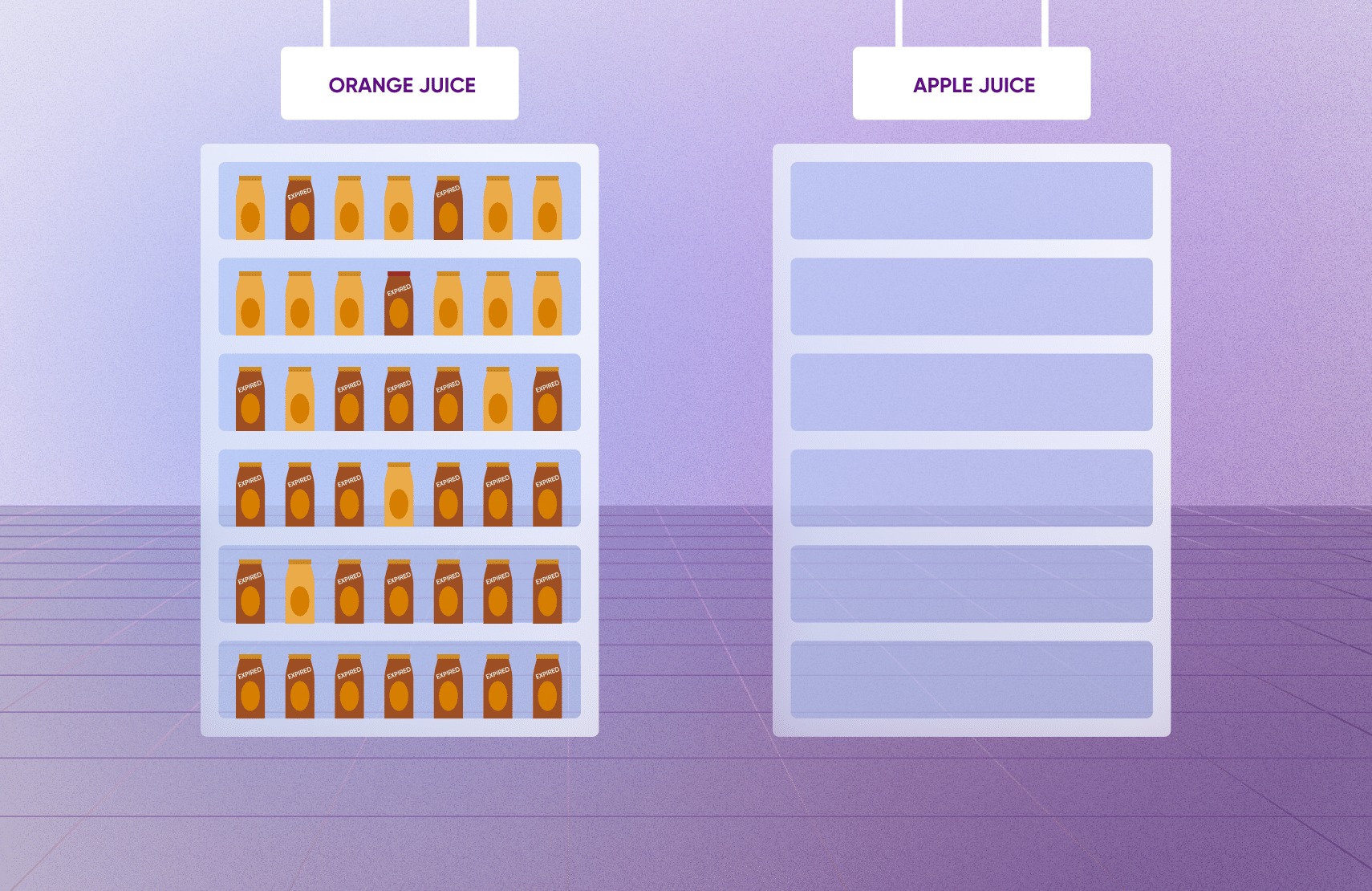
“I would rather be vaguely right than precisely wrong.”
– John Maynard Keynes
In today’s extraordinary and highly volatile inflationary environment, we’re witnessing real-time consequences of inaccurate inventory management and the miscalculations of demand forecasting across the retail supply chain.
On the one hand, you’ve had optimistic companies (and economists) who believed that surging inflation was “transitory” and that costs would normalize once temporary factors such as supply chain issues and outsized demand for goods returned to pre-pandemic levels. On the other hand, you’ve had companies that erred heavily on the side of caution in anticipation of further supply chain shortages and its ripple effects on the economy.
Both sides have had to contend with the mismatching of supply and demand to varying degrees, resulting in either empty shelves and falling revenues or ballooning inventories and packed warehouses, setting the stage for giant markdowns and the rapid deterioration of gross margins.
[toc-embed headline=”A Growing Inventory Management Crisis”]
A Growing Inventory Management Crisis
For example, the inventory-to-sales ratio for U.S. retailers has remained at historically low levels while retail sales have soared to unprecedented heights. For April 2022, the inventory-to-sales ratio was 1.18 (meaning retailers had 1.18 months of inventory on hand), while retail sales reached a record high of $590.3 billion.
On the other end of the spectrum, retailers like Walmart and Target recently missed the mark while forecasting demand, resulting in huge surpluses of inventory. To make room for fresh merchandise like back-to-school supplies, these retailers have had to aggressively mark down large quantities of stock, which they warned would squeeze margins and profits over the next several quarters.
Walmart recently cut its quarterly and full-year profit guidance, citing giant shifts in consumer spending due to the impacts of inflation. Because Walmart customers are particularly sensitive to rising gas prices, many have cut back on purchasing general merchandise and have bought more food at its stores instead.
Some companies are even doing the unimaginable: sending refunds to customers but telling them to keep their unwanted goods instead of returning them. According to a report by CNN:
“Instead of piling returned merchandise onto this growing inventory heap, stores are considering just handing customers their money back and letting them hang onto the stuff they don’t want.”
Even e-commerce giant Amazon is having its share of troubles. After doubling its warehouse space during the COVID-19 pandemic, the company is now struggling with overcapacity. Faced with $6 billion in extra costs for excess fulfillment and transportation capacity in addition to less efficient warehouses and inflationary pressures, the company has resorted to subletting its warehouse space to offset some of its losses.
Clearly, there are limits on the ability of firms to accurately forecast demand and corresponding inventory levels in these extraordinary times. However, improving a company’s inventory management capabilities can help prevent or mitigate some of the damage caused by unforeseen supply chain disruptions.
[toc-embed headline=”Inventory Management 101: How Inventory Management Combats Supply Chain Issues”]
Inventory Management 101: How Inventory Management Combats Supply Chain Issues
“Inventory is like dairy products… No one wants to buy spoiled milk.” – Tim Cook, CEO of Apple Inc.
What is inventory?
Inventory is the goods or materials that businesses sell to customers. There are four different types of inventory which includes raw materials, work in progress (WIP), finished goods, and maintenance, repair, and operations (MRO) goods, although some businesses only choose to recognize the first three.
Inventory can be valued using three different methods:
- The first-in-first-out method, or FIFO, whereby the first goods purchased are also the first goods sold. The cost of goods sold is based on the cost of the earliest purchased materials. The remaining items in inventory are accounted for at the most recently incurred costs.
- The last-in-first-out method, or LIFO, whereby the last goods purchased are also the first goods sold. The cost of goods sold is valued using the cost of the latest purchased materials. The remaining items in inventory are accounted for at the earliest costs.
- The weighted average method, or weighted average cost (WAC) method, divides the cost of goods available for sale by the number of units available for sale to yield the weighted-average cost per unit.
What is inventory management?
Inventory management is a process that tracks a company’s products throughout the supply chain. There are essentially three constant challenges that retailers face when it comes to managing inventories. These include having too much inventory that can’t be sold, not having enough inventory to fulfill orders, and not understanding what items are in inventory and where they’re located.
[toc-embed headline=”How Does Inventory Management Work?”]
How Does Inventory Management Work?
Inventory management enables businesses to know what inventory they have at any given time, and also informs them on the stock that is running low and needs replenishment. Enhanced inventory visibility lets companies know what to order, when to order, how much to order, and where to store stock.
Many simple business operations rely on spreadsheets and human intuition to manage inventories with varying degrees of success. However, retailers that sell products through multiple sales channels have complex operations with inventories spread out across a variety of stores, warehouses, distribution centers, transport vehicles, and more. As businesses scale, the use of excel spreadsheets to manually manage inventory becomes nearly impossible—forcing companies to seek out more robust solutions that are capable of handling increasingly large and complex operations.
[toc-embed headline=”The Rise of Inventory Management Software”]
The Rise of Inventory Management Software
Inventory management software can help businesses tackle the issues of availability and accuracy head-on. By supervising the flow of non-capitalized assets—or inventory—along the retail supply chain, some of today’s modern applications can intelligently identify which and how much stock businesses need to order at a given time and also track the inventory from procurement all the way to fulfillment.
A robust inventory management software solution utilizes data to control costs and meet consumer demands by automating manual processes and optimizing inventory levels across an organization. Greater visibility allows businesses to forecast demand better and improve efficiencies, while automated technology syncs inventory across all sales channels.
Specifically, a modern order management system (OMS) application provides a nearly real-time view of on-shelf, in-transit, and on-order inventory at distribution centers, stores, and suppliers. This enhanced inventory visibility offers several benefits for retailers and their customers.
For instance, a retailer can display the inventory on the storefront to improve website conversions. They can also use the data to direct the inventory to high-demand stores to capture additional sales. And they can optimize order fulfillment and deliver a memorable post-purchase experience to their customers.
[toc-embed headline=”What Is Fulfillment Optimization and Why Is It Vital For Inventory Management Processes?”]
What Is Fulfillment Optimization and Why Is It Vital For Inventory Management Processes?
Going hand-in-hand with inventory management is fulfillment optimization. Fulfillment optimization utilizes order fulfillment logic (OFL), or business rules, to intelligently optimize order fulfillment within the retail supply chain.
Businesses want to deliver the right products, to the right customers, from the right sources, and at the right time. But as order management becomes more complex for businesses at scale, optimizing sell-through rates with OFL as part of a configurable system can have an outsized impact on the success of a customer’s fulfillment experience.
For example, to get products from slow-moving locations to busier distribution centers or to route orders to buildings with excess inventory, OFL can be configured to apply different business rules and objectives to improve order management processes. This flexibility also allows businesses to quickly adapt to potential spikes in demand, as well as order changes and supplier availability issues.
[toc-embed headline=”4 Modern Inventory Management Tips To Combat Supply Chain Issues”]
4 Modern Inventory Management Tips To Combat Supply Chain Issues
While delays and disruptions in the global supply chain have wreaked havoc on product lead times and threatened total paralysis for entire industries, there are many issues that are simply out of the control of individual companies. Bottlenecks due to the COVID-19 lockdowns in China, a shortage of shipping containers, unprecedented port congestion, lack of infrastructure, and a shortage of transport capacity and skilled labor are just a few examples of the extraordinary economic environment that businesses must navigate through today.
But one area that can be controlled is inventory management. By utilizing modern inventory management software, businesses can benefit immensely from simple improvements that can squeeze out efficiencies along the retail supply chain. Below are a few tips that mid-market and enterprise brands can utilize to combat supply chain disruptions:
Inventory management tip #1: Improve visibility across the retail supply chain
Now more than ever, one of the most critical improvements that businesses can make is optimizing inventory visibility. In a supply network where product fulfillment can be from multiple channels, modern inventory management software can use aggregation to expose the full availability of inventory across the entire network, helping to minimize stock outs and order cancellations, satisfy service-level agreements (SLAs), and create a better fulfillment experience for the customer.
Perhaps the most important functionality that businesses lack is the syncing of inventory across sales channels and locations. Without a real-time, 360-degree view of inventory availability, it becomes increasingly more difficult to track inventory across a vast network, let alone use OFL to route products to optimal locations for quick and efficient fulfillment.
However, syncing inventory does more than just improve visibility. It also allows businesses to manage accurate buffer inventory levels (the excess inventory reserves to protect against unforeseen circumstances), optimize available-to-promise (ATP) inventory (the projected amount of inventory a business has in stock, ready to sell and not allocated for existing customer orders), view stock that is available in-transit, and view inventory positions by various channels or warehouses.
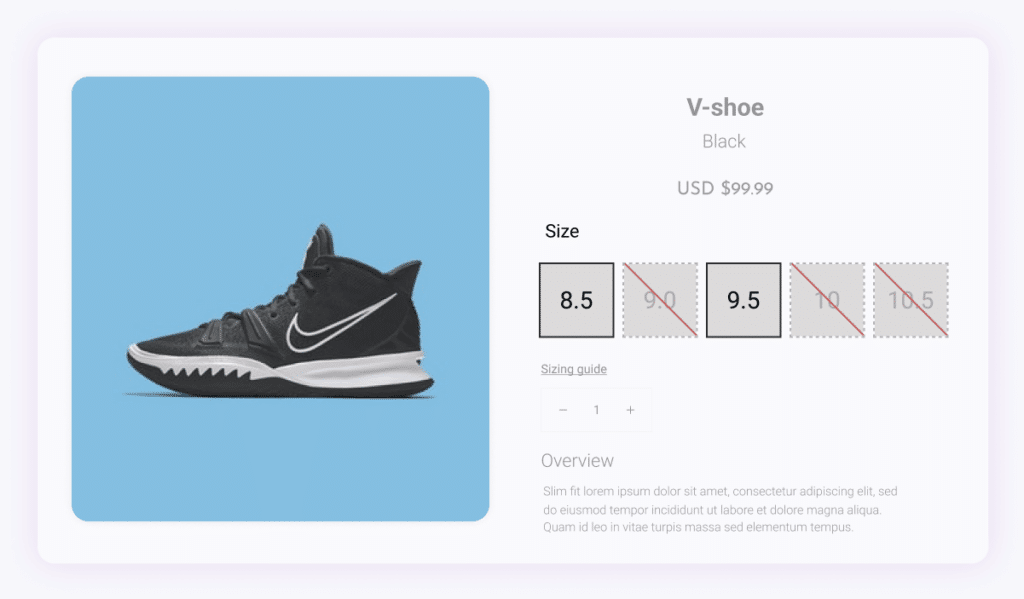
Display the exact ATP stock on the storefront
Furthermore, precise, real-time data can help businesses increase inventory turns and reduce markdowns, and allow them to support multi/omnichannel models, including buy-online-pickup-in-store (BOPIS), ship-to-store, and store fulfillment (as mini distribution centers). Syncing inventory to product detail pages (PDPs) on an e-commerce storefront can also inform customers about the exact amount of ATP stock they’re looking to purchase.
Inventory management tip #2: Aggregate demand using pre-ordering and backordering mechanisms
Demand forecasting uses predictive analysis to understand and predict customer demand and future sales by using historical sales data, trends, and known upcoming events to make informed decisions. Types of products, geography, seasonality, and competition can all influence consumer demand, which is why businesses often use agile demand forecasting models to plan inventory and warehousing needs and to respond quickly to unforeseen circumstances.
Demand forecasting generally happens with an enterprise resource planning (ERP) platform or with standalone demand planning software such as Netstock, SAP Business Planning, and IBM Planning Analytics, to name a few.
However, forecasting is only as good as the data that it’s given, which is why modern OMS applications offer pre-order and backorder mechanisms to get a better sense of the amount of inventory that’s required to meet customer expectations. Typically, a modern OMS application can aggregate the future demand of products with pre-order and backorder capabilities, which can then be sent to a demand planning system to forecast demand and plan future inventory requirements.
For instance, pre-orders are an excellent way for businesses to build hype, gauge demand, and adjust inventory levels in preparation for the launch of a new product or service. It can lower the financial risk of selling a new product and simultaneously build excitement and anticipation leading up to a product’s release. ATP inventory not only helps businesses keep enough inventory available to be sold, but it also anticipates future requirements using data-based forecasts. With pre-order capabilities, companies can sell items before they are ATP and release them on the specified pre-order release date that they become ATP.
Meanwhile, backorders allow a business to still complete a sale and retain its customer, while also helping the company to assess its inventory requirements. However, it’s also important to manage customer expectations. If a business is unable to deliver on its fulfillment promises, quickly communicating new estimated delivery dates and times is key for maintaining healthy customer relationships.
Inventory management tip #3: Embrace inventory control applications
A subset of inventory management is inventory control, or stock control. Inventory control ensures the optimal amount of supplies within a business. It also seeks to maximize profit while minimizing the total cost of inventory but still provides customers with products in a timely and efficient way without sacrificing customer satisfaction.
Modern inventory management software is often equipped with inventory control systems, making it easier for retailers to optimize stock levels and extend the data model to fit business needs.
A well-functioning inventory control system should allow companies to categorize inventory by attributes, locate items, pool inventory, and control the availability of stock to sell in each channel, market, or region. It should also allow them to set accurate and specific reorder points to replenish stock when needed. Companies can use software to plan for sales and stock-outs and prevent the buildup of dead stock, also known as unsold inventory that sits in storage and is not expected to be sold in the near future.
A few important software features that can help businesses achieve greater control over inventory include:
- Network aggregation of inventory
- Visibility into global, local, and available-to-promise (ATP) inventory
- Bulk actions to upload vendor inventory
- Product feed integration
- Automation of tedious and labor-intensive processes (eliminate manual spreadsheets)
- Low code/no code configuration of inventory management, multiple warehousing, and fulfillment rules.
- Custom inventory attributes and positions to categorize and organize inventory
- Safety stock and low stock settings
- Enhanced pre-order and backorder capabilities with inbound inventory allocation
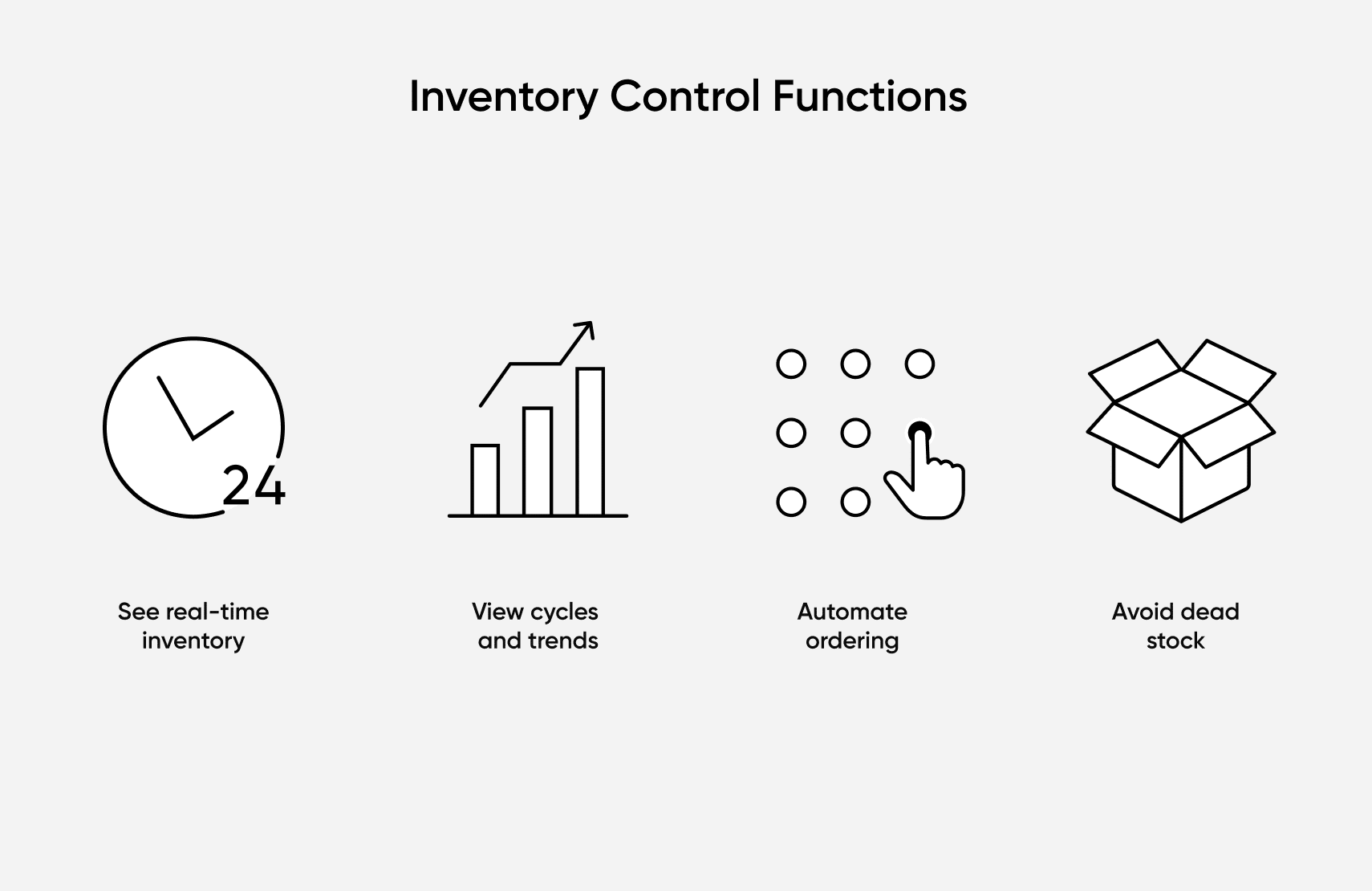
Inventory management tip #4: Invest in third-party inventory management software
Not all third-party inventory management software vendors are created equal. Because every business has its own unique requirements, companies that want to eliminate manual spreadsheets or abandon legacy inventory management applications in favor of modern inventory management software should assess the market to see what offerings suit their individual needs.
Some important questions to ask when considering a modern inventory management system are:
- Does the inventory management system easily connect with any enterprise resource planning (ERP) software, customer relationship management (CRM) software, or warehouse management system (WMS)?
- Does it work closely with order management processes?
- Does it easily integrate with your favorite applications using an open application programming interface (API) model?
- How long does it take to get the system up and running?
- Does it provide real-time updates on orders and inventory positions?
- Can the system add or remove warehouses quickly?
- Does it offer the latest features, including real-time inventory visibility, network aggregation, a pre-order/backorder engine, support for BOPIS, ship-to-store (for store pick up or replenishment), and store fulfillment (as mini distribution centers) models, bulk inventory import/export, and simple management of safety stock and low stock, to name a few?
- How much does it cost? A complete TCO analysis of software is critical before any decision can be made.
[toc-embed headline=”fabric OMS: Modern Inventory Management Software for E-Commerce”]
fabric OMS: Modern Inventory Management Software for E-Commerce
fabric’s order management system (OMS) is an API-first, cloud-native, and modular application that seamlessly combines inventory availability with order management and multi-channel fulfillment capabilities. It provides a single tool with a 360-degree view of inventory across an entire network, and it gives retailers the power to manage and distribute inventory to enable fully optimized omnichannel order fulfillment journeys and connected operations.
Our application is not only packed with all the latest features and functions but it’s also built for performance and scale. Its serverless and API-first architecture supports business growth without additional technology costs and easily connects to any ERP, CRM or WMS system. Furthermore, inventory and fulfillment rules can be easily set with configuration rather than code, and it’s powerful enough to be used as a standalone solution or as part of fabric’s comprehensive e-commerce platform.
If your business is looking to move away from a legacy inventory management system or tedious manual processes and wants to lower costs, boost margins, strengthen efficiency, and improve customer satisfaction, our market-leading OMS application may be what you’re looking for. Feel free to get in touch with us if you want to learn more.

Product engineering @ fabric. Previously merchandising and application development @ Staples.
